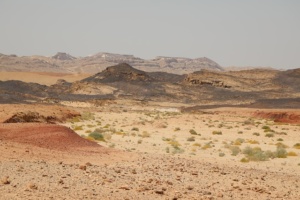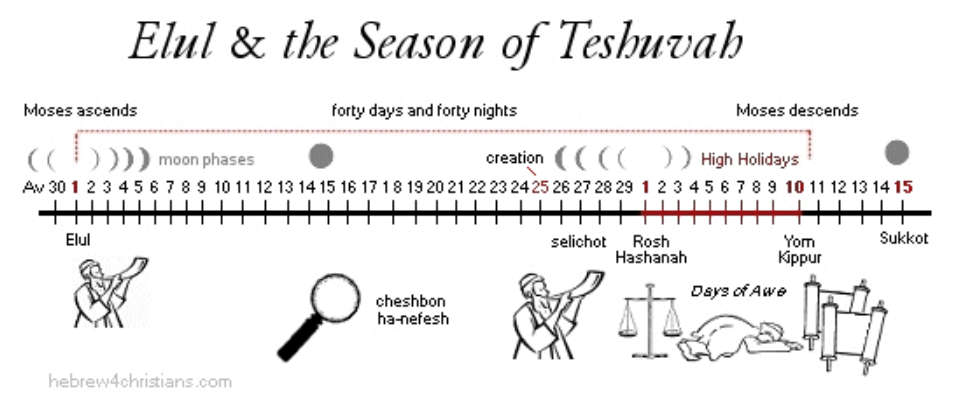 Sukkot – The Feast of Tabernacles
Sukkot – The Feast of Tabernacles
Sukkot (סוכות) is the Feast of Tabernacles and commemorates the years that the Jews spent in the desert while traveling to the promised land. Sukkot is a celebration of Adonai’s protection and provision.
To understand the blessings of this Holy Feast, we must understand the tabernacle, the desert conditions, the provisions of Adonai and the meaning of it all for our lives today.
The Tabernacle
The Sukkot experience ultimately resulted in the creation of a permanent tabernacle. The book of Exodus recorded Adonai’s instructions as to the building of the tabernacle. The items that composed the tabernacle were to be placed on a specific sequence as they related to something much deeper.
“Let them make Me a sanctuary, that I may dwell in their midst.”
Exodus 25:8
Noticing Perfection
For a full account of all of the Tabernacle specifications see Exodus 25–31 and 35–40. But, for the sake of understanding what the Tabernacle was and is, take a look at Adonai’s perfect plan outlined below in the order of appearance:
- Table of showbread
- The menorah
- The screen door
- Altar
- Laver
- Screen tp Courtyard Gate
- Anointing of Priests
Now, take a look at the amazing perfection of HaShem as described in Exodus 40 and in the same order recorded on the Gospel of John in relation to Yeshua and who He is:
- I AM the Bread of life (John 6:35)
- I AM the Light (John 8:12)
- I AM the Door (John 10:7)
- I AM the Good Shepherd (John 10:11)
- I AM the Resurrection (John 11:25)
- I AM the Way (John 14:6)
- I AM the Vine (John 15:5-8)
This should excite you to learn more about HaShem and His perfect plan. Now, the permanent tabernacle didn’t happen until after the community of Israel left the bondage of Egypt and walked through the desert for 40 years. So, let’s take a look at what they went through.
The Desert Conditions
The Hebrew word Bamidbar (בַּמִּדְבָּר) means “In the desert” and is found in Numbers 1:1. This is a special place where from nothing you find something.
“The Lord spoke to Moses in the tent of meeting in the Desert of Sinai on the first day of the second month of the second year after the Israelites came out of Egypt…”
Numbers 1:1
The same desert described as a place of exile, devoid of significant human presence and a place for outlaws (Genesis 16:7; 21:14; 21:20-21) takes on a supremely positive spiritual context. It became a place of complete dependence on HaShem.
In this desert a series of shelters (tabernacles) were set-up and taken down multiple times. These temporary and fragile structures assured complete dependence on the God of Abraham. Many died during that trip and many witnessed and experienced the sorrow of losing a loved one to the harsh desert conditions.
With complete dependence comes complete humility.
It was under these conditions that the Hebrew people received the Torah.
Adonai’s Provisions
Adonai provided to His people all that they needed. Guidance day and night, food, water, sandals that didn’t wear out, visual miracles, hope, etc. But, nothing was bigger or more important than the gift of the Torah.
Adonai’s revelation to Moses comes from the midst of a burning bush – the lowly shrubberies in the world – like the bush itself, the Jews were lowly and subjugated to Egypt before and now they were free – but, in the desert.
The Torah suggests that HaShem orchestrated the perfect place to bring the Jewish people to. A place desolate enough and lonely enough to be conducive for an entire nation to abandon the things they had learned from their masters in Egypt. A place that could cleanse them to receive a gift that would set them apart like no other people before them.
At Mount Sinai, the Great I AM descended and with his own finger for the first and only recorded time in history, provided humanity with the Ten Commandments. From all of the material provisions, the Ten Commandments came in material form to feed the soul of humanity forever and for that reason it has prevailed to this day.
What It All Means For Us Today
To this day, some people tend to go to the desert to avoid materialism and the corruption of urban society. The desert is viewed as a place to undress from all of the fake stuff and distractions around us. It’s a place to find communion with the great I AM. A place of complete dependence. A place to ponder what you own and what owns you. We must enter the desert and follow the footsteps of those redeemed from the bondage of Egypt. This is where you learn to become owned by the great I AM.
“A place to ponder what you own and what owns you.”
If you are going through a desert, pay attention to your surroundings and don’t ignore the shadows. If you lost everything and find yourself in complete dependence to God, position yourself to receive a gift.
Sukkot is a Shadow
The Jewish Feasts are a shadow of what was to come – namely, Yeshua – The Redeemer. Nevertheless, a shadow is what enhances a picture, giving it shape and three-dimensional perspective. Without a shadow you can’t have the necessary visual cue to understand depth and position; it becomes very difficult to judge the different elements’ location in relation to their environment; The relative size and scope of Yeshua’s teachings can only be seen by examining their respective shadows.

Throughout generations preachers have ignored the lessons taught on the Tanakh. Their issue is that of prejudices against the Jewish people. For this very reason there are so many jesuses that are white with blue eyes. The willful ignorance and prejudices against the Feasts is responsible for the misunderstanding of many biblical truths. The issue is that the entire bible falls apart without the understanding of meaning and context. Apparent small and large events seem to have the same size and importance without taking in consideration their shadow.
The Pharisees and Sadducees refused to see the light as they grabbed hold of the shadows. Likewise, today’s churches refuse to see the shadows therefore presenting a version of truth that is flat, shapeless and in many cases untrue.
Conclusion
Most if not all of the Jewish Feasts are generally ignored by religious people today. This is the result of willful ignorance to the reasons behind these Feasts and sometimes flat out prejudice against the Jewish people. This general lack of understanding prevents them from really understanding Yeshua as they are unable to understand the context in which He lived; The feasts He celebrated and frame-of-mind of the community of Israel, to which, He was a part of.
It is true to say that if all we had was John 3:16, that would be enough to understand that Salvation is Yeshua. But, we don’t stop there. We want to learn it all for the glory of HaShem. So, we celebrate Sukkot and all of the lessons that come from the Feasts. We also invite you to come learn together.
Shalom!
Rabbi Douglas
